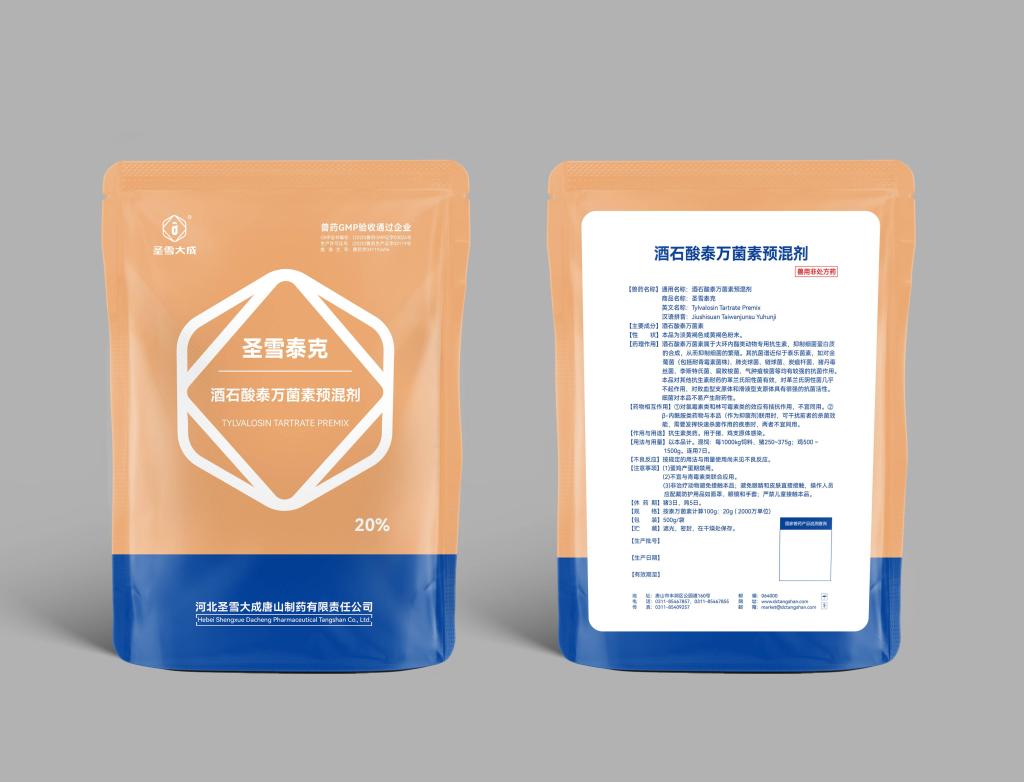Tel:+8618231198596

News
 CONTACT
CONTACT
 CONTACT
CONTACT
- Linkman:Linda Yao
- Tel: +8618231198596
- Email:linda.yao@dcpharma.cn
- Linkman:CHARLES.WANG
- Department:Overseas
- Tel: 0086 0311-85537378 0086 0311-85539701
News
Veterinarians emphasize the importance of proper tylvalosin tartrate premix administration.
TIME:2024-07-17
Understanding Tylvalosin Tartrate
Tylvalosin tartrate is a semi-synthetic derivative of tylosin, belonging to the macrolide class of antibiotics. It acts by inhibiting bacterial protein synthesis, specifically targeting Mycoplasma species and other respiratory pathogens. Tylvalosin tartrate is typically administered orally via premix formulations added to animal feed or water, ensuring effective distribution and absorption in poultry and swine.
Mechanisms of Action
Antibacterial Activity
Tylvalosin tartrate exerts its antibacterial effects by binding to the 50S ribosomal subunit of susceptible bacteria, thereby inhibiting peptide bond formation and halting protein synthesis. This mechanism disrupts bacterial growth and replication, leading to bacterial death and resolution of infections caused by Mycoplasma and related pathogens.
Pharmacokinetics
Following oral administration, tylvalosin tartrate is rapidly absorbed from the gastrointestinal tract and distributed to target tissues, including respiratory epithelial cells where Mycoplasma infections commonly reside. Its pharmacokinetic properties ensure adequate concentrations at the site of infection, enhancing therapeutic efficacy.
Applications in Veterinary Medicine
Respiratory Disease Management
Poultry
In the poultry industry, respiratory diseases caused by Mycoplasma gallisepticum and Mycoplasma synoviae pose significant economic challenges due to reduced productivity and increased mortality. Tylvalosin tartrate premixes are widely used to control and treat these infections, improving flock health and performance.
Swine
Swine respiratory disease complex (SRDC), often caused by Mycoplasma hyopneumoniae and other bacterial pathogens, is a major concern in pig farming. Tylvalosin tartrate premixes are effective in reducing clinical signs, lung lesions, and transmission of respiratory pathogens among pigs, thereby optimizing growth rates and profitability.
Control of Other Bacterial Infections
Beyond respiratory diseases, tylvalosin tartrate demonstrates efficacy against other bacterial infections in veterinary practice. It is used to treat gastrointestinal disorders, such as ileitis in pigs caused by Lawsonia intracellularis, and to manage infections associated with other Mycoplasma species in various animal species.
Importance of Proper Administration
Dosage and Administration Guidelines
Precision in Measurement
Accurate measurement of tylvalosin tartrate premixes is critical to ensure animals receive the recommended therapeutic dose. Variations in dosage can lead to under-dosing, reducing efficacy, or over-dosing, potentially causing adverse effects or promoting antimicrobial resistance.
Compliance with Withdrawal Periods
Adhering to withdrawal periods specified by regulatory authorities is essential to prevent residues of tylvalosin tartrate in animal products intended for human consumption. Compliance ensures food safety and consumer confidence in veterinary antibiotic use practices.
Minimizing Antimicrobial Resistance
Responsible Use Practices
Proper administration practices, including adherence to dosage regimens and withdrawal periods, contribute to responsible antibiotic use in veterinary medicine. This approach minimizes the development and spread of antimicrobial resistance among bacterial populations, preserving the effectiveness of tylvalosin tartrate and other antibiotics for future generations.
Surveillance and Monitoring
Regular surveillance of bacterial susceptibility profiles and monitoring of treatment outcomes help veterinarians make informed decisions regarding antibiotic therapy. This proactive approach identifies emerging resistance patterns and informs adjustments in treatment protocols to maintain efficacy.
Regulatory Considerations
Veterinary Drug Approval
Tylvalosin tartrate premixes are subject to regulatory approval and oversight in many countries to ensure safety, efficacy, and proper use. Regulatory agencies set standards for manufacturing practices, labeling requirements, and permissible indications to protect animal and public health.
Antimicrobial Stewardship
Global initiatives promote antimicrobial stewardship in veterinary medicine, advocating for prudent antibiotic use practices. Veterinarians play a pivotal role in implementing stewardship principles, including appropriate selection, dosage optimization, and monitoring of antibiotic therapies to mitigate resistance risks.
Challenges and Future Perspectives
Formulation Stability
Ensuring the stability and compatibility of tylvalosin tartrate premix formulations with animal feed and water presents formulation challenges. Advances in formulation technologies may improve stability, bioavailability, and shelf life, enhancing product efficacy and convenience in veterinary practice.
Education and Training
Continuous education and training programs for veterinarians, farmers, and stakeholders are crucial for promoting best practices in antibiotic administration and stewardship. Knowledge dissemination fosters awareness of proper tylvalosin tartrate use and compliance with regulatory requirements.
Alternative Strategies
Research into alternative strategies, such as vaccine development, probiotics, and non-antibiotic therapies, aims to reduce reliance on antibiotics like tylvalosin tartrate in veterinary medicine. Integrating these approaches into disease prevention and management protocols offers sustainable solutions to combat emerging infectious diseases.
Global Collaboration
Collaboration between veterinary professionals, researchers, industry partners, and policymakers is essential for addressing global challenges associated with antibiotic resistance and emerging infectious diseases. Shared expertise and resources facilitate innovation, regulatory harmonization, and effective disease control strategies worldwide.
Conclusion
Proper administration of tylvalosin tartrate premix is paramount in veterinary medicine for managing respiratory diseases and bacterial infections in poultry and swine. By adhering to dosage guidelines, compliance with withdrawal periods, and promoting antimicrobial stewardship, veterinarians uphold the efficacy of tylvalosin tartrate while minimizing the risk of antimicrobial resistance. Regulatory oversight, continuous education, and research advancements are crucial for optimizing veterinary antibiotic use practices and ensuring sustainable animal health management. As efforts continue to evolve, tylvalosin tartrate remains a valuable tool in combating emerging infectious diseases and safeguarding animal welfare in modern agriculture.
- Tel:+8618231198596
- Whatsapp:18231198596
- Chat With Skype







